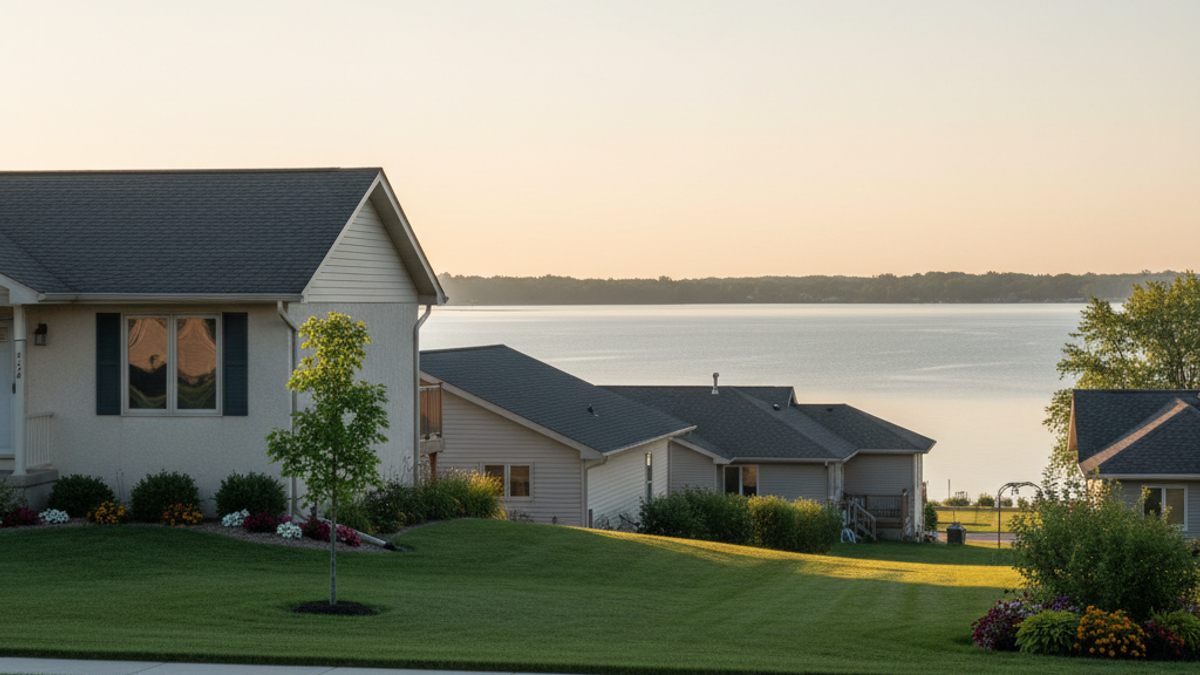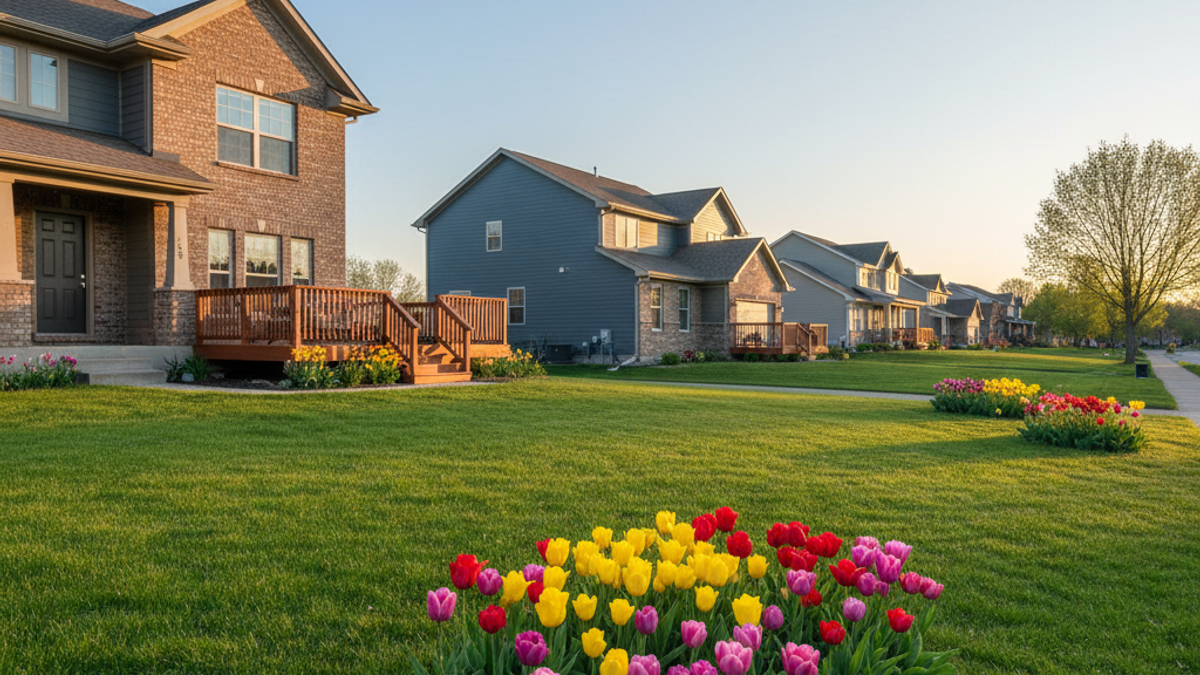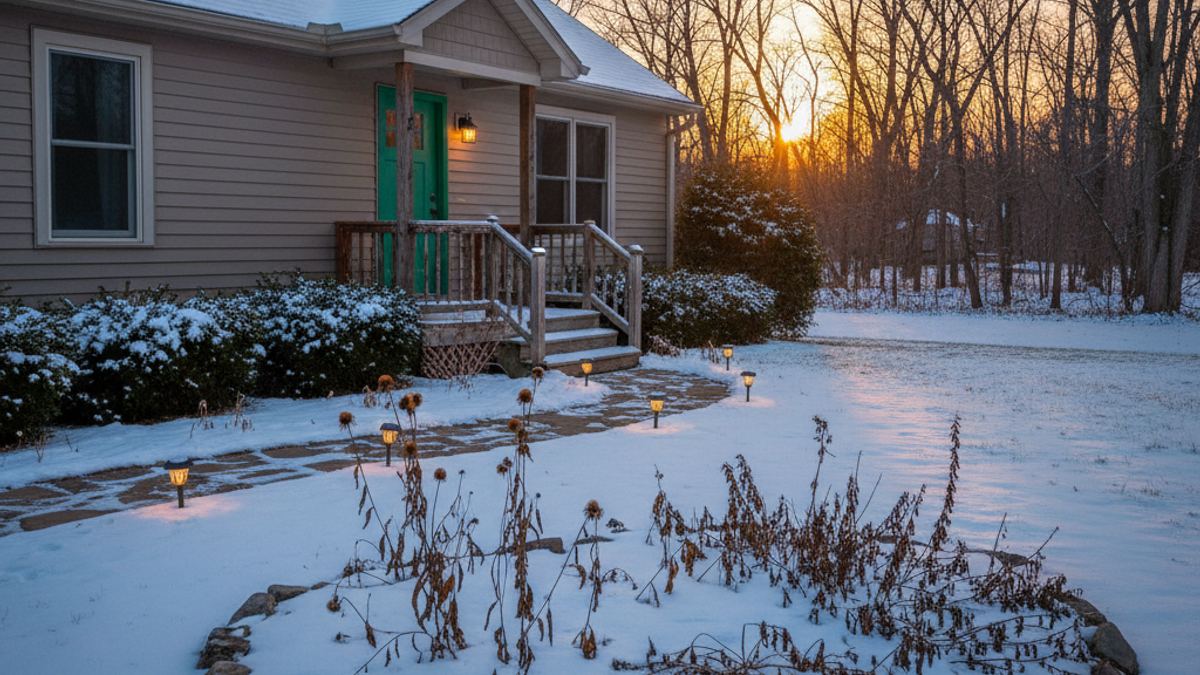Timing Your Home Sale: The Key Considerations for DeForest, WI
The 5-Year “You’ll Probably Thank Yourself” Rule
Five years. That’s the figure you’ll see on countless finance blogs and in quick-hit videos. It’s not carved in stone, yet there’s solid logic behind it.
• Appreciation needs a runway
Home values in DeForest rose roughly 6% per year on average between 2018 and 2023. Hold for twelve months and you might squeak out a gain, but after transaction costs it often feels like a wash. Hang on for five years and that 6% compounds—suddenly you’re staring at more than 30% growth. Not shabby.
• Closing costs spread out
Origination fees, title insurance, inspection bills—they all hit at purchase. Owning longer lets you “amortize” those upfront costs so they hurt less on a per-year basis. Sell too fast and you never outrun them.
• Lifestyle stability
It takes about two years for most owners to settle in, learn the commute, find favorite coffee, and dial in projects. By year five you’ve squeezed real life out of the place, making a move feel like an upgrade, not a reset.
Does that mean five years is an ironclad rule? No. Think of it as the baseline that covers most scenarios without forcing you to overanalyze every market twitch.
Breaking Even on Costs (and Actually Making Money)
Let’s zoom in on the breakeven equation many first-time sellers overlook.
Upfront hit
Closing costs at purchase average 2% to 4% of the loan amount. On a $350,000 DeForest home that can top $12,000.
Cost to sell
Agent commissions, transfer tax, staging, and minor touch-ups often run another 7% to 8% of the final sale price. That can feel painful if your equity is still thin.
Mortgage amortization
In the early years a chunk of each payment is interest, not principal. Equity builds slowly at first, then faster in later years. Hang on longer and the scale tilts in your favor.
Punch those numbers into a calculator and most DeForest owners find the breakeven point lands near the 4-to-5-year mark. Push past it and you’re not just recouping costs—you’re pocketing real profit.
Market Recovery Time in DeForest
The last decade delivered a few bumps: the 2020 pandemic roller coaster, a mortgage-rate spike in 2022, supply-chain hiccups that slowed new builds. DeForest bounced back each time, but price dips required 18 to 24 months to fully recover. If you bought right before a dip, five years gave you enough runway to ride it out and still exit on top.
Equity Building: Watching the Gap Widen
Equity equals market value minus what you owe. Simple, right? The magic is in the timeline.
Year 1: maybe 5% equity after your down payment
Year 3: roughly 15%–18% thanks to payments and appreciation
Year 5: 25%–30% or more, and that’s when options explode—HELOC, cash-out refi, or straight sale
Equity is oxygen. More of it means lower stress and better negotiating power when you do decide to sell.
Local Market Trends in DeForest
Average Home Appreciation
Data pulled from South Central Wisconsin MLS shows these median price jumps:
2019 → 2020: +8%
2020 → 2021: +9%
2021 → 2022: +6%
2022 → 2023: +4% (rate spike year)
2023 → early 2024: tracking near +5%
Even the slower years still moved upward. Stack five of them and you’re looking at 30%–35% total appreciation. That trajectory rewards owners who stay put long enough to let compound growth do the heavy lifting.
Supply and Demand Dynamics
• Inventory skews tight
DeForest often sits below two months of housing supply. Anything under six months favors sellers.
• New construction can’t keep pace
Permits are up, sure, yet many builds target higher price brackets, leaving mid-range homes in short supply. Fewer comparable listings translate to stronger resale power for existing owners.
• Job growth in Dane County
Tech, healthcare, and government positions keep rolling in from nearby Madison. More jobs equal more buyers hunting within a reasonable commute. DeForest ticks that box.
Healthy demand paired with light supply means owners holding three to five years generally exit into a pool of eager buyers.
Interest Rates Impact
You felt the sting in 2022 when rates leaped above 7%. It slowed showings for a season, yet sellers who waited until 2023—when rates eased a bit—caught fresh momentum. The takeaway? Higher rates can stretch days-on-market, so consider pairing your sale with a dip if possible. Holding a few extra months can be worth it.
New Developments in DeForest
• Yahara River trail extensions
More recreation equals higher buyer buzz.
• Planned mixed-use district near Windsor Road
Retail plus residential boosts walkability scores.
• Bus Rapid Transit expansion from Madison
Shorter commutes lift property values along the corridor.
When you catch wind of large projects about two years out, note that price bumps often kick in around groundbreaking. If you bought early, selling just after amenities open can deliver a tidy premium.
Financial Considerations and Incentives
Tax Implications: The Two-Year Exclusion
Current federal rules let you sidestep capital gains tax on up to $250,000 of profit if you’ve lived in the home two of the last five years (double for married filers). That alone encourages owners to cross the 24-month threshold before listing. Miss it by a week and the IRS still wants its slice.
Cost of Selling: Early vs. Later
Sell at year two: commissions + staging eat 8% of sale price, your equity might barely cover it.
Sell at year five: same percentage, but equity is thicker and appreciation cushions the blow.
Put another way, waiting can turn fees from stressful line items into a shrug-worthy cost of doing business.
Refinancing as an Option
Maybe you snagged a 4% rate in 2021. Unloading a sub-4% mortgage in a 6% world can feel like torching an heirloom. If you simply crave lower payments or cash for upgrades, a refi or home equity line could scratch the itch without forcing a sale. Always stack those numbers next to the cost of moving before you decide.
Incentives for a Long-Term Hold
• Lower insurance premiums once claim-free history grows
• Opportunity to switch to a 15-year loan with better terms after equity jumps
• Ability to convert to a rental later and chase passive income
Selling too soon clips these perks before they blossom.
Personal Circumstances Influencing Sale Timing
Life Changes
• Career relocation
When the dream job calls from another state, timing rules crumble.
• Household size shifts
A new baby, adult child move-in, or blended family can shrink that cozy two-bed fast.
• Major relationship changes
Splitting equity during a divorce often sets its own clock.
In any of these cases, selling earlier may be the only real path forward, even if you forfeit a bit of upside. Peace of mind counts.
Home Condition and Upkeep
If the roof needs replacing soon, HVAC is aging, or the basement keeps reminding you that water flows downhill, exiting before big repairs turn into money pits can be wise. Buyers will see the issues—price accordingly—and you dodge the looming bills.
Investment Property Strategy
Some owners buy with rental conversion in mind. Live there two years, grab the tax exclusion, then shift to landlord mode. Hold three extra years as a rental, build more equity, then sell or 1031-exchange into something bigger. Works beautifully in DeForest where vacancy rates are low and rents climbed 19% in five years.
Emotional Readiness
No line on a spreadsheet measures attachment. Maybe you adore the neighbors, host legendary backyard cookouts, or still get butterflies pulling into the driveway. If thinking about leaving twists your stomach, you’re not ready. That’s valid.
Quick-Hit Checklist: Are You Close to “Sell Smart” Territory?
Run through these bullets:
• Owned at least two years?
• Crossed 20% equity?
• Nearby sales showing solid gains last six months?
• Upcoming life change within twelve months?
• Comfortable covering 8% of sale price in costs?
• Local mortgage rates predicted to dip or hold steady soon?
If you can tick four or more yeses, the timing looks pretty sweet.
Ready to Test the Waters?
You don’t need to hammer in a yard sign tomorrow. Start small.
- Pull a fresh comparative market analysis (CMA).
- Tour two active listings that match your square footage.
- Ask a lender for a net sheet estimating proceeds at different sale prices.
- Sketch a “stay vs. sell” budget—include repairs, moving expenses, and closing costs.
- Sleep on it. Gut checks beat impulse listings every time.
When the numbers line up and the life puzzle pieces snap into place, you’ll feel it. And if you can ride out the full five years? Odds are stacked in your favor.
Parting Thought
The best time to plant a tree was 20 years ago. The second-best? Today. Real estate follows the same rhythm. If you already own in DeForest, your clock is ticking in a good way. Keep one eye on that five-year marker, tune in to local developments, and check your personal dashboard of finances and feelings. Do that and you’ll know exactly when to grab the next set of keys—and cash in on the ones you hold now.













